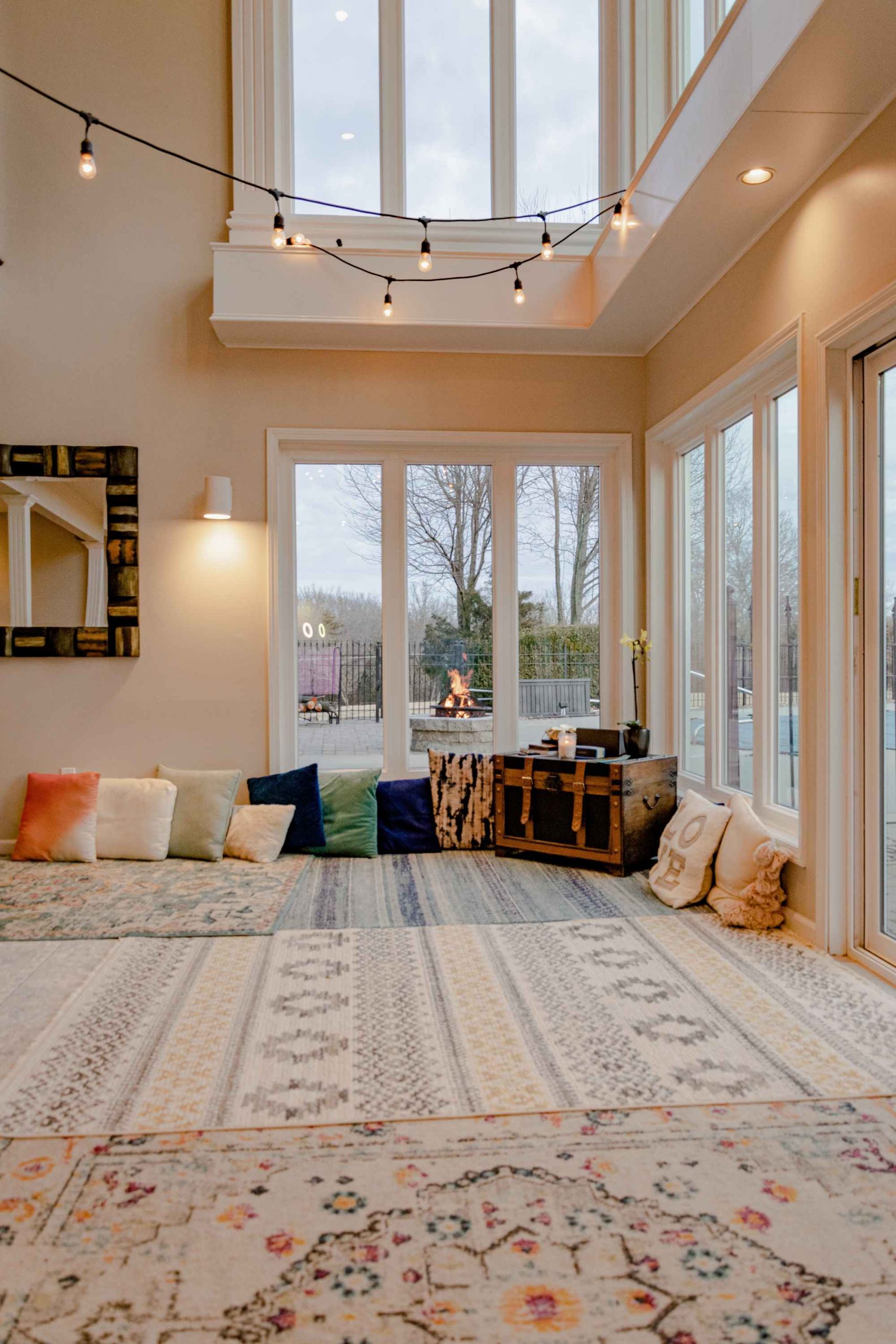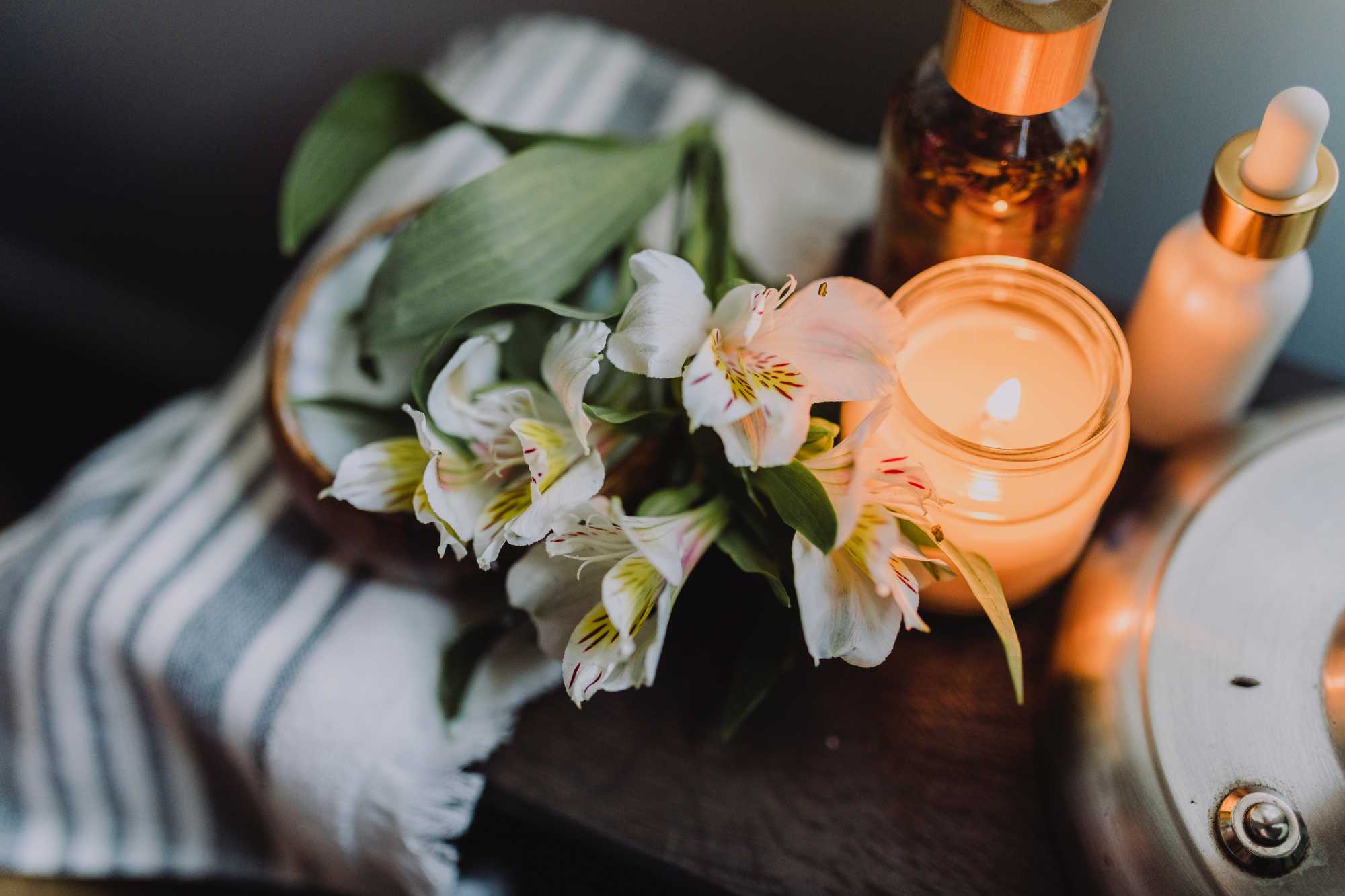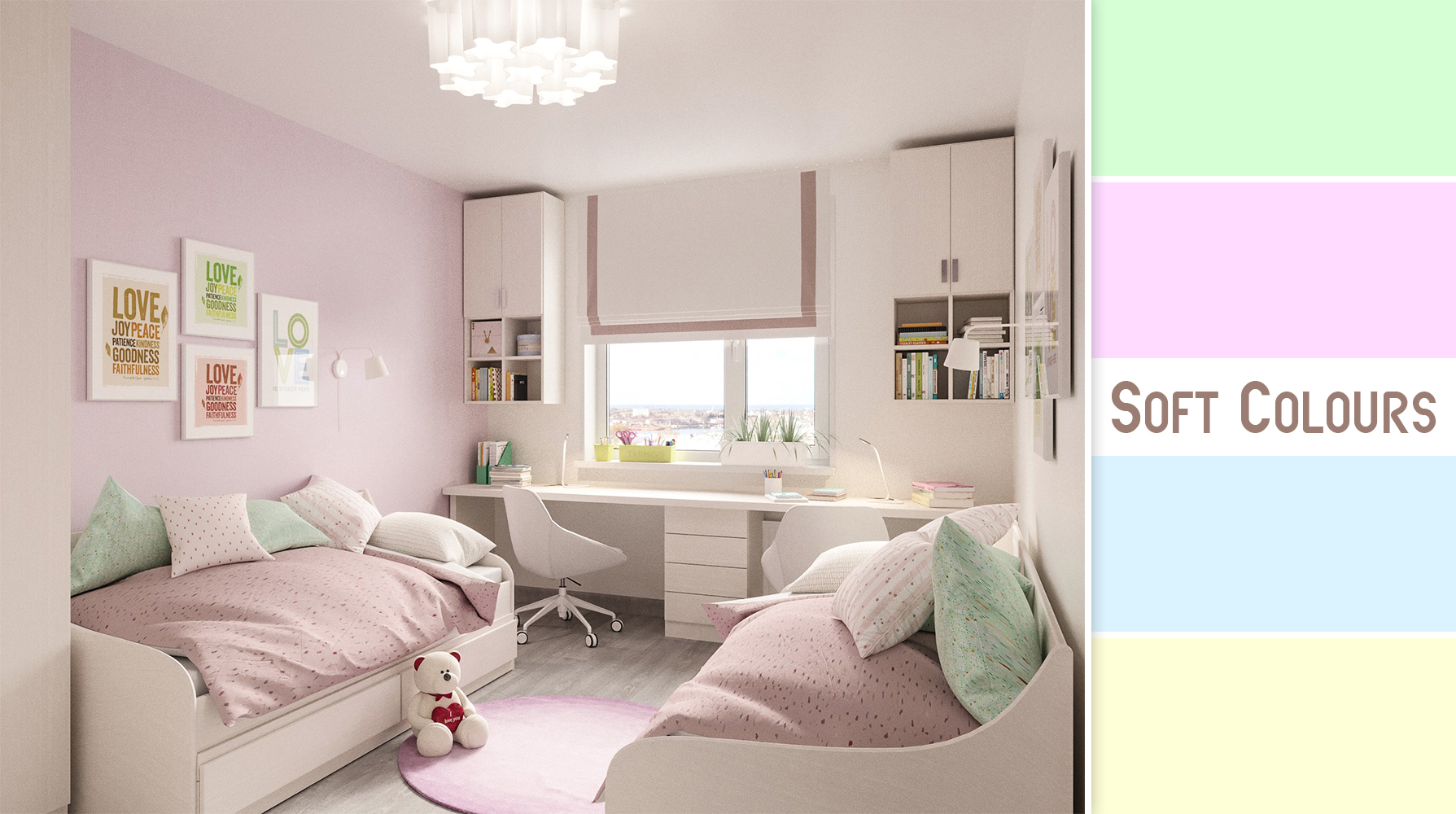
While all homeowners have this expectation for their home to be calm, serene, a reflection of their own self, it is hardly ever the case. There are times you have to compromise with your family members and then you end up with an interior that is completely different than what you had initially planned.
It might be a nice idea to dedicate a corner of your house that is unlike the rest of the house, a corner where one can be at peace and tranquility. Having a dedicated space that will just be used for meditation and relaxing will have a more positive energy than the rest of the rooms and will motivate you to be comfortable and feel blissful. So, without any further ado, here are six simple tips to create a meditation space at home that can help you transform any corner or room of your house into a calm meditative space.
How To Create A Meditation Space At Home?
01. Soft Lighting

The dedicated meditative space in your house must be devoid of any kind of harsh lighting. Soft lighting is the key to feeling at ease. Your ideal meditative space should have a lot of natural light to reinforce warmth into it. If the windows in your space lets in very harsh and direct sunlight, you can add some white semi-transparent curtains to diffuse the light while still letting fresh air come into the room.
However if you lack adequate natural light or like to unwind and meditate at night, go for yellowish hues instead of white LEDs. To add a soft lighting to the space, you can go for different lamps or even hang string fairy lights.
02. Bring Nature Into the Space

Bringing natural elements into your meditative space will not only encourage relaxation but also facilitate healing and rejuvenation of the mind after a long and tiring day. It is not possible for everyone to go outdoors and meditate close to nature in a forest or by the beach.
The next best thing is to bring nature into your meditation room. To do so, you can add fresh flowers in decorative vases, keep potted indoor plants in the room, keep décor items that use branches or dried leaves and flowers, or even keep some sand and decorative seashells in a clear glass jar. You can utilize these spaces in your home to decorate with plants as well
You must however remember that if you wish to keep indoor plants, you do have to care for them and provide them with adequate light to keep them alive. Therefore, you should also know all the factors that are important to keep in mind for indoor plant care.
If you have a brown thumb and have never kept and grew plants before, start with easy to maintain plants like pothos and snake plants and then work your way up. You can even research plants that give off the most oxygen like areca palms, snake plants, and aloe vera plants, and keep them in the space to get clean air at all times.

Furthermore, if you want to learn more about indoor plants for your home, go here –
03. Add Comforting Elements
Sitting crossed-legged while meditating might be a hard position for some people to keep which then interferes with their relaxing process. Some people might prefer to sit normally and meditate instead of holding the same position for ours.

We suggest you add as many pillows and cushions as it takes to cozy up the meditative space and add soft plushies and blankets to make it more comfortable. You can even add a small couch to the space and make it comfier. Bonus points if you can match the colour of your comforting elements with the rest of the elements in the room.
04. Beautiful Aroma

Aromatherapy is another element that you can add in your meditative space that can help you calm down and alleviate stress. You can incorporate aromas in your space by burning incense, scented candles, or heating oils.
Scents with hints of lavender, peppermint, and chamomile can be especially effective in rejuvenating your. Moreover, aromatherapy has been linked to reducing muscle pain and even boosts the immune system of humans.
05. Keep Meditative Space Uncluttered

Seeing a cluttered space can instantly trigger anxiety and stress in one’s mind. Thus, it is very important that you keep your meditative space clean and uncluttered. First of all, make sure that the space is away from any kind of distractions like TV or your work station.
Secondly, keep as many things as you think is necessary for providing tranquility to the space and get rid of the rest of the stuff. Think of it as a minimalist approach and keep only things that either bring joy to you or are absolutely necessary to the space. The fewer things you keep in the space, the less cluttered it will look.
The actual point of having a meditation space and meditating is to relieve yourself from stress and anxiety and calm and relax yourself. A cluttered space will do just the opposite and will fail to promote serenity. Similarly, having your laptop or computer in sight will constantly remind you of all the work that is pending and thus you will fail to actually relax in your meditative space.
06. Soothing Colours for Walls

Bold and vibrant colours are definitely capable of sprucing a place up and making it brighter. However, you want the meditative space to radiate calmness not essentially happiness. Hence, choosing soft and soothing colours with pastel hues is ideal for your meditative space.
Soft colours like cream, soft pastel greens, blues, and pinks, or any other muted tones will make you feel comfortable and cozy in your space. You can even paint your walls with a soft yellow colour as the colour yellow is associated with mental alertness and overall physical and mental vitality. Pastel violets are also perfect for increasing the power of meditation as much as ten times more.
Before making your selection on colours, you also need to be aware of the warm and cool colours, which will help you to make an informed decision. Having a meditative space in your house will keep your mind open, relaxed, and full of positive energy. The above tips to create a meditation space at home will help you create a meditative area that speaks to you and where you will be at your most comfortable and calm state. Decorating the area where you will sit down to unwind is a journey where you connect with yourself and understand your personal preferences.
There are no specific guidelines to follow while designing a meditation room. However, from yoga mats to various-shaped pillows, many things can help to create a meditation environment in the house. You can follow the below steps as well.
Image Courtesy: Image 7
Author Bio
Sanjukta Ganguly – I am Sanjukta Ganguly from Kolkata. I have 9+ years of experience in content writing. I have written for multiple niches and genres like, health, travel, pregnancy, love and relationship, dating, hosting services, and WordPress, Press Release, Web Designing, Case Study, Thesis, Proof Reading, Academic Writing, etc. I can handle the work of 4000-5000 words daily.

































